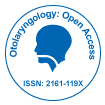Obstructive Sleep Apnea: Comparative Analysis of Surgical and Non-Surgical Treatment Modalities
Received: 30-Dec-2024 / Manuscript No. ocr-25-161363 / Editor assigned: 02-Jan-2025 / PreQC No. ocr-25-161363 / Reviewed: 18-Jan-2025 / QC No. ocr-25-161363(QC) / Revised: 22-Jan-2025 / Manuscript No. ocr-25-161363(R) / Published Date: 30-Jan-2025 DOI: 10.4172/2161-119X.1000617
Abstract
Obstructive sleep apnea (OSA) is a prevalent sleep disorder characterized by repetitive episodes of upper airway obstruction, leading to disrupted sleep and decreased oxygen saturation. The management of OSA involves both surgical and non-surgical treatment modalities. Non-surgical approaches, including Continuous Positive Airway Pressure (CPAP), oral appliances, and lifestyle modifications, are the first-line treatments. Surgical interventions, such as uvulopalatopharyngoplasty (UPPP), maxillomandibular advancement (MMA), and hypoglossal nerve stimulation, are considered in cases of severe OSA or non-compliance with conservative therapies. This paper provides a comparative analysis of these treatment modalities in terms of efficacy, patient compliance, risks, and long-term outcomes.
Introduction
Obstructive sleep apnea (OSA) affects millions of individuals worldwide, contributing to significant morbidity and reduced quality of life. Characterized by repetitive airway collapse during sleep, OSA leads to intermittent hypoxia, hypercapnia, and fragmented sleep patterns. If left untreated, OSA is associated with increased risks of cardiovascular disease, metabolic disorders, and neurocognitive impairment. Treatment strategies for OSA include both non-surgical and surgical interventions, each with distinct benefits and limitations. While non-surgical approaches are generally recommended as the initial treatment, surgical interventions are considered for patients with anatomical abnormalities or those who fail to tolerate conservative treatments. This research aims to compare these modalities to determine their effectiveness, safety, and long-term patient outcomes [1-3].
Discussion
CPAP is the gold standard for OSA treatment. It maintains airway patency by delivering continuous positive pressure through a nasal or oronasal mask. Studies indicate that CPAP significantly reduces apnea-hypopnea index (AHI), improves daytime alertness, and lowers cardiovascular risks. However, patient adherence is a significant challenge due to discomfort, dryness, and noise associated with the device. Mandibular advancement devices (MADs) and tongue-retaining devices are alternatives for mild to moderate OSA. These appliances reposition the jaw or tongue to prevent airway obstruction. Although they are more tolerable than CPAP, their effectiveness in severe OSA is limited. loss, positional therapy, and avoidance of alcohol and sedatives play crucial roles in managing OSA. While lifestyle changes alone may not be sufficient for moderate to severe OSA, they enhance the effectiveness of other therapies. This procedure involves the removal of excess tissue from the soft palate and oropharynx to widen the airway. While UPPP can be effective in selected patients, recurrence rates are high, and complications such as swallowing difficulties may arise [4,5].
Conclusion
The choice between surgical and non-surgical treatments for OSA depends on disease severity, patient anatomy, and individual preferences. While CPAP remains the first-line therapy due to its effectiveness and non-invasiveness, adherence challenges necessitate alternative options such as oral appliances and hypoglossal nerve stimulation. Surgical interventions, particularly MMA and hypoglossal nerve stimulation, are viable alternatives for selected patients, offering substantial improvements in airway patency. Future research should focus on refining patient selection criteria and developing novel therapies to enhance treatment adherence and long-term success in managing OSA.
Acknowledgment
None
Conflict of Interest
None
References
- Palmer BW, Heaton SC, Jeste DV (1999)Older patients with schizophrenia: challenges in the coming decades.Psychiatric Services 50: 1178-1183.
- Patorno E, Bohn R, Wahl P, Avorn J, Patrick AR, et al. (2010)Anticonvulsant medications and the risk of suicide, attempted suicide, or violent death.JAMA 303: 1401-1409.
- Olesen JB, Hansen PR, Erdal J, Abildstrøm SZ, Weeke P, et al. (2010)Antiepileptic drugs and risk of suicide: a nationwide study.Pharmacoepidem Dr S 19: 518-524.
- Leipzig R, Cumming R, Tinetti M (1999)Drugs and falls in older people: a systematic review and meta-analysis: I. Psychotropic drugs.J Am Geriatr Soc 47: 30-39.
- Gill S, Bronskill S, Normand S, Anderson GM, Sykora K, et al. (2007)Antipsychotic drug use and mortality in older adults with dementia.Ann Intern Med 146: 775-786.
Google Scholar, Crossref, Indexed at
Google Scholar, Crossref, Indexed at
Google Scholar, Crossref, Indexed at
Google Scholar, Crossref, Indexed at
Citation: Tsung-Lin Y (2025) Obstructive Sleep Apnea: Comparative Analysis of Surgical and Non-Surgical Treatment Modalities. Otolaryngol (Sunnyvale) 15: 617 DOI: 10.4172/2161-119X.1000617
Copyright: © 2025 Tsung-Lin Y. This is an open-access article distributed under the terms of the Creative Commons Attribution License, which permits unrestricted use, distribution, and reproduction in any medium, provided the original author and source are credited.
Select your language of interest to view the total content in your interested language
Share This Article
Recommended Journals
Open Access Journals
Article Tools
Article Usage
- Total views: 757
- [From(publication date): 0-0 - Sep 27, 2025]
- Breakdown by view type
- HTML page views: 638
- PDF downloads: 119
